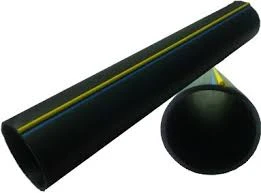Дек . 17, 2024 16:30 Back to list
hdpe pipe electrofusion welding
Electrofusion Welding of HDPE Pipes An Overview
High-Density Polyethylene (HDPE) pipes are widely recognized for their durability, resistance to corrosion, and flexibility, making them an ideal choice for a variety of applications, including water and gas distribution, sewage systems, and industrial piping. One of the most effective methods for joining HDPE pipes is through electrofusion welding. This technique not only ensures strong, reliable joints but also contributes to the efficiency and longevity of the piping system.
What is Electrofusion Welding?
Electrofusion welding is a specialized method used to join two pieces of HDPE piping. This process employs an electrically heated coil embedded in the fusion fitting, which is used to connect the pipes. When an electric current passes through the coil, it generates heat due to the electrical resistance. This heat melts the surfaces of the pipes and the fitting, creating a homogeneous joint as the molten material fuses together once the current is removed and the assembly cools down.
Advantages of Electrofusion Welding
One of the most significant benefits of electrofusion welding is the reliability of the joint. The process creates a uniform bond that is as strong as the pipe material itself. This is particularly crucial in applications that involve high pressure or exposure to varying environmental conditions. Additionally, electrofusion welding is less susceptible to issues of misalignment or gap formation, which can be problematic in other joining methods.
Another advantage is the ease of use and rapidity of the process. Electrofusion fittings are straightforward to install, requiring minimal equipment. Unlike traditional welding methods, which may require skilled labor and extensive preparation, electrofusion can often be completed quickly and with fewer specialized tools. This results in significant time savings during installation, reducing labor costs and project timelines.
Furthermore, electrofusion welding is highly versatile. It can be performed in various environments, including confined spaces and cold weather conditions. Specialized electrofusion fittings are available for different pipe diameters and applications, allowing this method to be used across a wide range of scenarios, from domestic plumbing to large-scale industrial systems.
Installation Process
The installation of HDPE pipes using the electrofusion welding method consists of several critical steps to ensure a successful joint
hdpe pipe electrofusion welding

1. Preparation The pipe ends must be cut cleanly and squared off, followed by the removal of any contaminants such as dirt or grease. Stripping the outer layer of the pipe to expose clean HDPE material is also crucial for effective welding.
2. Alignment The pipes should be properly aligned with the electrofusion fitting. Misalignment can lead to inadequate fusion and weak joints.
3. Heat Application The electrofusion machine is connected to the fitting, and electrical current is passed through the coil. The operator monitors the time and power settings according to the fitting specifications to ensure optimal melting without overheating.
4. Cooling Once the heating cycle is complete, the welding joint is allowed to cool undisturbed to solidify and gain strength.
5. Testing After the joint has cooled adequately, testing can be conducted to assess the integrity and strength of the weld. Pressure tests and visual inspections are common methods of quality assurance.
Challenges and Considerations
While electrofusion welding offers numerous benefits, there are also challenges to be aware of. Proper training and adherence to industry standards are essential to ensure a successful weld. Improperly executed electrofusion can lead to joint failure, which can cause leaks and systemic issues.
Environmental factors, such as temperature and humidity, can also influence the welding process and the materials involved. Therefore, it is crucial to monitor these conditions closely during installation.
Conclusion
Electrofusion welding of HDPE pipes is a sophisticated and efficient technique that supports the integrity and longevity of piping systems. As industries continue to innovate and prioritize reliable infrastructure, understanding and utilizing methods like electrofusion welding will remain integral to successful project execution. Whether in urban settings, industrial applications, or specialized installations, the power of electrofusion technology stands out as a pivotal component in the future of piping solutions.
-
Durable Glossy PVC Rigid Sheet | Premium High-Shine Panels
NewsAug.26,2025
-
Durable PP Rigid Sheet: Lightweight, Chemical Resistant Solutions
NewsAug.21,2025
-
PVC Grey Sheet for Extraction: Chemical Resistant & Durable
NewsAug.19,2025
-
Durable PVC Pipe Fittings for Plumbing & Irrigation Needs
NewsAug.18,2025
-
HDPE Steel Belt Reinforced Spiral Corrugated Pipe | High Strength
NewsAug.17,2025
-
HDPE Pipe Fittings: Durable, Leak-Proof Solutions
NewsAug.16,2025

